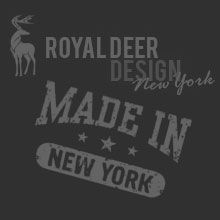In the world of big business competition, it is crucial for small business owners to establish themselves. Brand positioning allows your business to promote itself, to define a presence in a world of cut- throat competition. Effective brand positioning will help your small business effectively and efficiently use the limited marketing resources you have available.
If you’re just getting started on this route, it’s most important to devote both time and attention to the process. Dedication on the front end will save you money in the long run. There exist consultants with experience in the process of brand positioning; their years of working with multiple companies can offer your small business useful information that can save you hundreds, potentially thousands of dollars.
This article will detail two methods for brand positioning. Method one explains how to position your brand with your employees; it is easier, but less effective than method two, which utilizes your clients and staff for brand positioning. Stepwise directions for each path are found below.
Method 1: Utilizing your staff for brand positioning
Step 1: Gather your employees for a long meeting- set aside at least three uninterrupted hours for the discussion time.
Step 2: You’ll need a conversation moderator. If you have the funds, hire an outside consultant. If not, appoint a team member to serve as moderator. Another individual should take notes of the meeting, capturing all ideas as they develop.
Step 3: As Pooh says, think, think, think. Separate ideas of how you wish your small business to be viewed into lists by social group: perception by customers, investors, employees, and shareholders.
Step 4: Discuss freely the uniqueness of your company. This unique value proposition should be viewed in light of your company’s desired customer perception.
Step 5: Be sure to consider those views you wish to avoid. For example, you want to be seen as an educational tutor, not an after- school babysitter.
Step 6: Spy on the brand positioning of your competitor. What sets you apart? Is this difference one that your customers will value?
Step 7: Wait a few days after the meeting for thoughts to simmer, then synthesize the conversation. Develop your positioning statement and its implied corporate message.
Step 8: Take a test drive of the statement. Try it out on customers, employees, and investors to determine the quality of your work.
Step 9: Develop action items from your statement. Create a list of to-dos for your team. Start small, such as in a telephone advert, and let the brand spread to all services or marketing that relates to your company, e.g. uniforms, letterhead, collateral.
Method 2: Utilizing your client base for brand positioning
Step 1: Set aside a block of time on two separate days. This time may total between 4-6 hours. Invite customers and your staff to meet with you in these two different sessions.
Step 2: Meet with these groups separately to discuss your product or service. It is best if you can organize this meeting to be handled by an outside research firm, however smaller businesses may need to do it themselves.
Step 3: Questions to discuss with customers:
a: What are the top brands in our category? This must be a brand thought of without assistance. Rank these brands 1-10, and work together to agree on the ranking.
b: What are key features of products in our category? List those most relevant and rank them most to least important.
c. Match brands & features. In our groups, have participants match each brand in the list with one feature in the other list. The purpose of this procedure is to identify features our product can then “own.”
Step 4: Now that you have enough data to discuss, meet with your staff to determine a positioning strategy. It is entirely possible that you may have no strategy. If this is the case, you may have to think creatively or revise your product.
Step 5: You should now have enough information to create a positioning statement that will guide future marketing.




